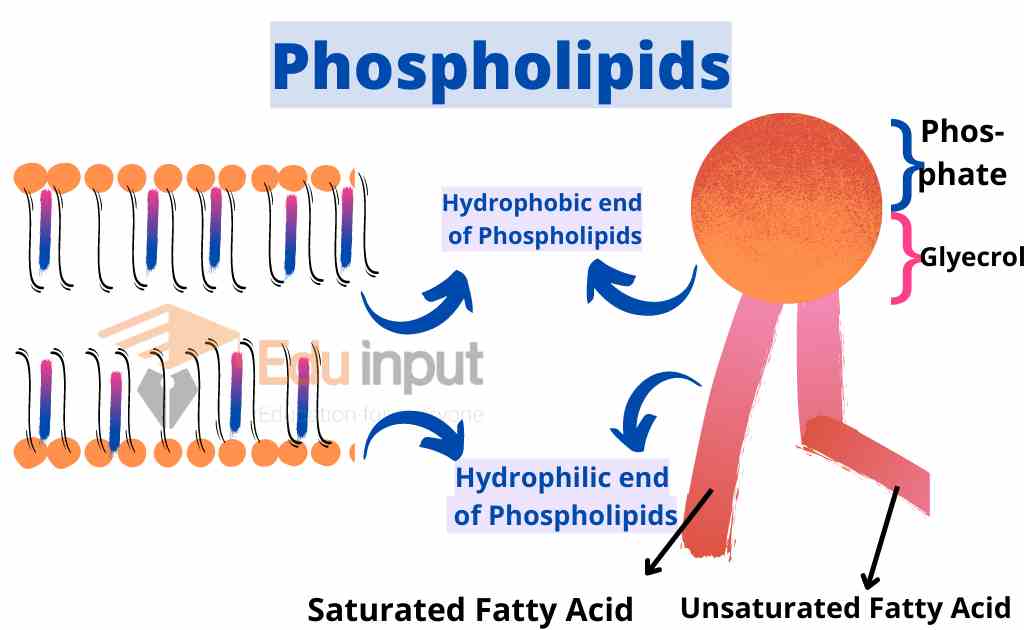Carbohydrates | Classification of Carbohydrates
Carbohydrates are defined as polyhydroxy (with many OH) aldehydes or ketones, or complex substances which yield polyhydroxy aldehyde or ketones subunits on hydrolysis.
Hydrolysis means the breakdown of large molecules into small molecules by using water molecules.
Discovery of Carbohydrates
In the mid-1800s, German chemist Justus von Liebig was one of the first to recognize that the body derived energy from the oxidation of foods recently eaten, and also declared that it was carbohydrates and fats that served to fuel the body.
Carbohydrates as Hydrated Carbon
The word carbohydrates is a French term that means hydrated carbons. Because the ratio of hydrogen atoms to oxygen atoms is always almost 2:1, as in H2O.
Derivatives of Carbohydrates
Carbohydrate derivatives are sugar molecules that have been modified with substituents other than hydroxyl groups. Examples include glycosylamines, sugar phosphates, and sugar acetates.
Composition of carbohydrates
Carbohydrates are composed of carbon, hydrogen, and oxygen. The ratio of hydrogen and oxygen in carbohydrates is the same, as in water. This ratio is 2:1 in the General formula.
Their general formula is Cx(HO)y. Here x is the whole number. This number may be from three to many thousands. Here y may be same or different the whole number.
Sources of Carbohydrates
Green plants are the major source of carbohydrates. The primary products of photosynthesis are Carbohydrates. There are many examples of chemical changes that helps to produce many plant compounds from carbohydrates. For example, they are present in the plasma membrane along with proteins and lipids. They are also present in the plant cell wall in form of cellulose.

Classification of Carbohydrates
Carbohydrates are also known as saccharides. The word saccharide is derived from the Greek word saccharin. That means sugar. Saccharide is used as a unit (monomer) of carbohydrates. Carbohydrates are categorized into three groups.
- Monosaccharides
- Oligosaccharides
- Polysaccharides
Monosaccharides
They show the following characters:
1. Monosaccharides are simple sugars.
2. Monosaccharides are sweet.
3. They are water-soluble. Monosaccharides cannot be hydrolyzed into simple sugars.
4. Chemically, they can be polyhydroxy aldehydes or ketones.
5. All carbon atoms except one carbon in a monosaccharide have a hydroxyl group (OH). The carbon without the OH group forms an aldehyde or ketone group.
6. The sugars with aldehyde groups are called Aldo-sugar and the sugar with keto groups are called keto-sugars.

Oligosaccharides
Oligosaccharides show the following characters:
1) These are comparatively less sweet.
2) Their water solubility is comparatively less.
3) They yield 2 to 10 monosaccharides on hydrolysis.

Polysaccharides
Polysaccharides are the most complex and most abundant carbohydrates in nature. They show the following characteristics:
1. They are tasteless.
2. They are sparingly water-soluble.
3. They may be branched or unbranched.
4. Several monosaccharides are linked by glycosidic linkage and form polysaccharides.
5. They have high molecular weight. Carbohydrates occur abundantly in living organisms.

Importance of Carbohydrates
They have the following importance:
1. Carbohydrates are present in all organisms. They are present in all parts of a cell.
2. They form different structures, like cellulose of wood, cotton, and papers.
3. They act as storage compounds like starch and glycogen. Starch is present in cereals and root tubers (potatoes). Carbohydrates are also present in brown sugar and milk sugar.
4. Carbohydrates play both structural and functional roles.
5. Simple carbohydrates are the main source of energy in the cell.
6. Some carbohydrates form cell walls in plants and microorganisms.
Related FAQs
What are Carbohydrates?
Carbohydrates are defined as polyhydroxy (with many OH) aldehydes or ketones, or complex substances which yield polyhydroxy aldehyde or ketones subunits on hydrolysis.
What are the types of carbohydrates?
Carbohydrates are categorized into three groups.
Monosaccharides
Oligosaccharides
Polysaccharides
What are the 3 main carbohydrates?
Sugar, Starch and Fibers are the main carbohydrates.
Is Glucose a carbohydrate?
Glucose is a carbohydrate, that comes under the umbrella of monosaccharides.

 written by
written by 




Leave a Reply